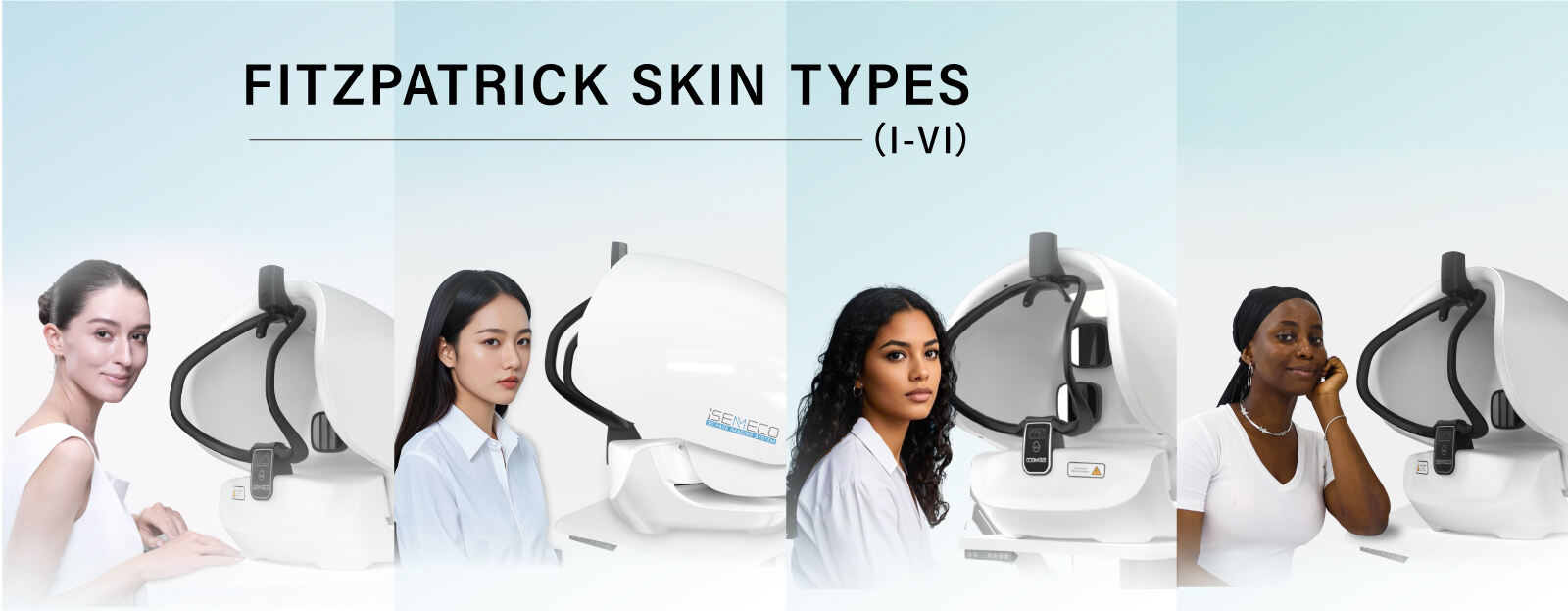
In the dynamic field of dermatology and aesthetic medicine, clinicians require tools that adapt to diverse patient needs—from diagnosing pigmentation disorders to monitoring post-procedural healing. MEICET’s core skin analyzer stands as a versatile workhorse, integrating multi-spectral imaging, ultraviolet imaging, and polarized light technology to deliver actionable insights across a spectrum of clinical scenarios. Designed with the complexities of professional practice in mind, this device transcends one-size-fits-all solutions, becoming an indispensable asset for clinicians managing everything from sensitive skin to anti-aging treatments.
A Unified Approach to Diverse Skin Concerns
Skin health is rarely singular; a patient presenting with acne may also struggle with post-inflammatory hyperpigmentation, while one seeking wrinkle reduction might have underlying barrier issues. MEICET’s skin analyzer addresses this complexity by combining multiple imaging modes to paint a holistic picture:
- Multi-spectral imaging layers data from visible, ultraviolet, and polarized light to distinguish between epidermal and dermal pigment—critical for tailoring depigmentation treatments. A patient with dark spots, for example, might show superficial pigment (responsive to topical brighteners) under visible light and deeper clusters (requiring laser therapy) via polarized light.
- Ultraviolet imaging reveals latent sun damage or early melanin activation, enabling proactive intervention before visible signs appear. This is particularly valuable for patients with a history of sun exposure, allowing clinicians to recommend preventive measures like antioxidants or targeted sunscreens.
- Polarized light cuts through surface reflections to highlight vascular irregularities or inflammation, key for diagnosing sensitive skin conditions like rosacea or tracking post-procedural redness.
This integration means clinicians can assess multiple concerns in a single session, streamlining workflows without sacrificing depth. A patient with both sensitive skin and fine lines, for instance, can have barrier function evaluated via polarized light while wrinkles are mapped using visible light—all in minutes.
Supporting Evidence-Based Treatment Plans
Gone are the days of relying solely on visual assessment and anecdotal experience. MEICET’s analyzer provides objective metrics that ground treatment decisions in data:
- For sensitive skin repair, it quantifies transepidermal water loss and barrier integrity, helping clinicians select appropriate moisturizers or soothing agents. A patient with atopic dermatitis, for example, might show improved barrier function on follow-up scans after switching to a ceramide-rich formula—confirming the treatment’s efficacy.
- In anti-aging protocols, the device measures wrinkle depth and texture irregularities, allowing clinicians to track how treatments like microneedling or neuromodulators impact skin structure over time. If scans show minimal improvement in wrinkle depth after three months of topical retinol, the clinician can confidently adjust the plan—perhaps adding a resurfacing treatment.
- For facial micro-plasty planning, it identifies areas of volume loss or skin laxity, guiding filler placement or thread lift positioning. A patient seeking jawline definition might have scans that highlight weak subcutaneous support, prompting the clinician to recommend a cohesive filler to enhance structural integrity.
Enhancing Collaboration and Documentation
In multi-provider clinics or referral networks, consistent communication is key. MEICET’s analyzer generates standardized reports that translate complex imaging data into clear, actionable insights—whether shared with colleagues, aestheticians, or referring physicians. A dermatologist treating a patient for rosacea can include polarized light scans in the patient’s record, ensuring the aesthetician avoids irritating treatments during follow-up facials.
These reports also strengthen patient education. By showing a patient ultraviolet images of latent sun damage, clinicians can reinforce the importance of daily sunscreen use. Similarly, comparing pre- and post-treatment scans of a patient’s depigmentation progress makes abstract “improvement” tangible, boosting adherence to long-term care plans.
MEICET’s skin analyzer is more than a diagnostic tool—it’s a unifying force in clinical practice, bridging diverse concerns with data-driven clarity. For clinicians seeking to elevate their approach to everything from routine skin checks to complex case management, it offers a foundation of precision that scales with their practice.
To explore how this versatility can enhance your clinic, visit www.isemeco.com.
 EN
EN
 AR
AR
 BG
BG
 HR
HR
 CS
CS
 DA
DA
 NL
NL
 FI
FI
 FR
FR
 DE
DE
 EL
EL
 HI
HI
 IT
IT
 JA
JA
 KO
KO
 NO
NO
 PL
PL
 PT
PT
 RO
RO
 RU
RU
 ES
ES
 SV
SV
 TL
TL
 IW
IW
 ID
ID
 SR
SR
 SK
SK
 SL
SL
 UK
UK
 VI
VI
 SQ
SQ
 HU
HU
 TH
TH
 TR
TR
 FA
FA
 AF
AF
 MS
MS
 UR
UR
 BN
BN
 LA
LA

